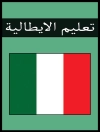A comprehensive introduction to TESOL for new and future teachers of English, offering a full and detailed view of the process of becoming a language teacher
Introduction to TESOL: Becoming a Language Teaching Professional presents an expansive and well-balanced view of both the interdisciplinary knowledgebase and professional opportunities in the field of language teaching. Written to help aspiring TESOL educators understand how to begin their careers, this comprehensive textbook covers both the foundational linguistic elements of TESOL as well as the practical pedagogical aspects of the discipline.
Written with the needs of the introductory student in mind, this book delves into the essentials of Englishas a Second Language (ESL) and Englishas a Foreign Language (EFL) teaching, covering professional organizations, language acquisition theories, instructional practices, professional development, and more. Readers are provided with clear descriptions of recent research and contemporary practices, numerous illustrations and examples highlighting key material, and engaging real-world vignettes from professionals teaching internationally. Offering a coherent overview and contextualized orientation of the field of TESOL, this guide:
* Discusses the differences in TESOL approaches in international settings
* Addresses the current state and potential future of TESOL with a view for new developments in teaching pedagogy and language research
* Explores the history and development of the field, including the political, social, and cultural decisions made about language teaching and learning
* Describes the specializations, niches, and subfields within the discipline of TESOL
* Explains what, how and why TESOL educators need a working understanding of linguistics and second language acquisition theories
* Outlines the scope of the profession and how to engage in professional organizations to grow in expertise
Introduction to TESOL: Becoming a Language Teaching Professional is essential reading for students and educators planning to enter this dynamic and rewarding area of language teaching.
Зміст
Acknowledgments ix
Introduction 1
Part One: The Field of TESOL 3
1 What Is TESOL? 5
2 How Is TESOL an Academic Profession? 26
3 With Whom and Where Do Those Prepared in TESOL Work? 51
Part Two: TESOL Professionals’ Knowledge of Linguistics and Second Language Acquisition 89
4 What Are the Five Areas of Linguistics and How Do They Help TESOL Educators? Why Do TESOL Educators Need a Working Understanding of Linguistics? 91
5 What Are the Various Areas of Second Language Acquisition Theory and How Do They Guide Instruction? 118
Part Three: TESOL Professionals’ Knowledge of Instruction, Planning, and Assessment 145
6 How Does Theory Inform and Guide Instructional Practice? 147
7 What Do Educators Need to Know About Teaching the Language Skills of Listening and Reading When Using Integrated Language Skills? 169
8 How Do TESOL Educators Teach Speaking and Writing in Integrated Language Instruction? 195
9 Tools: Grammar, Vocabulary, Pronunciation, and Spelling 226
10 What Themes, Topics, and Content Can I Employ? 267
11 How Has Digital Technology Changed Language Teaching and Learning? 287
12 What Are Ways of Planning for Second Language Instruction and Assessing Learning? 306
Part Four: Where Do We Go From Here? 337
13 How Does TESOL Develop Its Body of Knowledge and Share Professional Knowledge? 339
14 What Are the Current Situations in TESOL and New Directions To Be Taken? 360
Acronyms in TESOL/Applied Linguistics 372
Index 375
Про автора
Kate Mastruserio Reynolds is Professor of TESOL and Literacy at Central Washington University, USA. She has been in the field of TESOL since 1996 and has authored and edited numerous publications. Most recently, she was Associate Editor for the vocabulary volume of The TESOL Encyclopedia of English Language Teaching.
Kenan Dikilita? is Professor of University Pedagogy at University of Stavanger, Norway. His research interests include TESOL teacher development, action research, and bilingual education in monolingual contexts. He has co-authored various monographs and edited books, and published journal articles on these topics.
Steve Close teaches English Literature, Composition, and Communications at Big Bend Community College, USA. He has taught university students in Ukraine and Uzbekistan. His research interests include vernacular English as a tool in the teaching of writing and multicultural studies.












